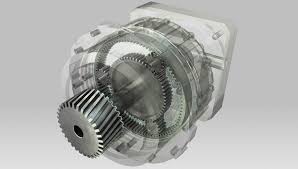Mobile:+86-311-808-126-83
Email:info@ydcastings.com
stainless steel price
Understanding Stainless Steel Prices Factors and Trends
Stainless steel has become an essential material in various industries, including construction, automotive, and manufacturing. As demand for stainless steel continues to grow, understanding its pricing dynamics is crucial for businesses and consumers alike. This article delves into the key factors influencing stainless steel prices and the trends shaping the market.
Factors Affecting Stainless Steel Prices
1. Raw Material Costs The primary components of stainless steel are iron, chromium, nickel, and manganese. Fluctuations in the prices of these raw materials significantly impact the overall cost of stainless steel. For instance, nickel is one of the costliest elements in stainless steel production, and its price can be volatile, influenced by mining activity, global demand, and trade policies.
2. Supply and Demand Dynamics The balance between steel supply and demand plays a pivotal role in pricing. When demand increases—due to growth in construction or manufacturing—prices typically rise. Conversely, during economic downturns, reduced demand can lead to lower prices. Global events, such as the COVID-19 pandemic, have shown how quickly these dynamics can shift.
3. Production Costs Advances in technology and production methods can influence prices as well. More efficient processes can reduce production costs, potentially lowering prices for consumers. However, investments in new technologies often require substantial upfront costs, which can lead to initial price increases.
4. Geopolitical Factors Trade tariffs and import/export regulations can also significantly affect stainless steel prices. For example, tariffs imposed by one country on imported stainless steel can lead to higher prices domestically as local suppliers adjust to maintain profit margins. Additionally, geopolitical tensions can affect global supply chains, leading to scarcity and higher prices.
stainless steel price

5. Market Speculation Like many commodities, stainless steel prices can be affected by market speculation. Traders often buy and sell based on predicted future prices, which can cause short-term price fluctuations that may not reflect underlying supply and demand fundamentals.
Current Trends in Stainless Steel Pricing
As of late 2023, stainless steel prices have shown some stability after a period of volatility. The post-pandemic recovery has spurred increased demand, particularly in the construction and automotive sectors. In many regions, infrastructure projects are on the rise, leading to heightened demand for durable materials, including stainless steel.
Moreover, the shift towards sustainability has prompted industries to seek out greener production methods, potentially impacting pricing as companies invest in new technologies. The push for recycling and the use of scrap metal in stainless steel production could also influence prices positively by reducing dependence on raw materials.
Lastly, as economies stabilize and supply chains recover from disruptions, stainless steel prices may continue to normalize. However, uncertainties remain, particularly concerning raw material costs and geopolitical tensions that could impact availability and pricing.
Conclusion
Understanding the factors influencing stainless steel prices is crucial for stakeholders across various industries. While current trends indicate a stabilization of prices, ongoing global events and market dynamics will continue to shape the future of stainless steel pricing. Staying informed about these factors can help businesses make better purchasing decisions and plan for future demands effectively.
-
Why Should You Invest in Superior Pump Castings for Your Equipment?NewsJun.09,2025
-
Unlock Performance Potential with Stainless Impellers and Aluminum End CapsNewsJun.09,2025
-
Revolutionize Your Machinery with Superior Cast Iron and Aluminum ComponentsNewsJun.09,2025
-
Revolutionize Fluid Dynamics with Premium Pump ComponentsNewsJun.09,2025
-
Optimizing Industrial Systems with Essential Valve ComponentsNewsJun.09,2025
-
Elevate Grid Efficiency with High-Precision Power CastingsNewsJun.09,2025











